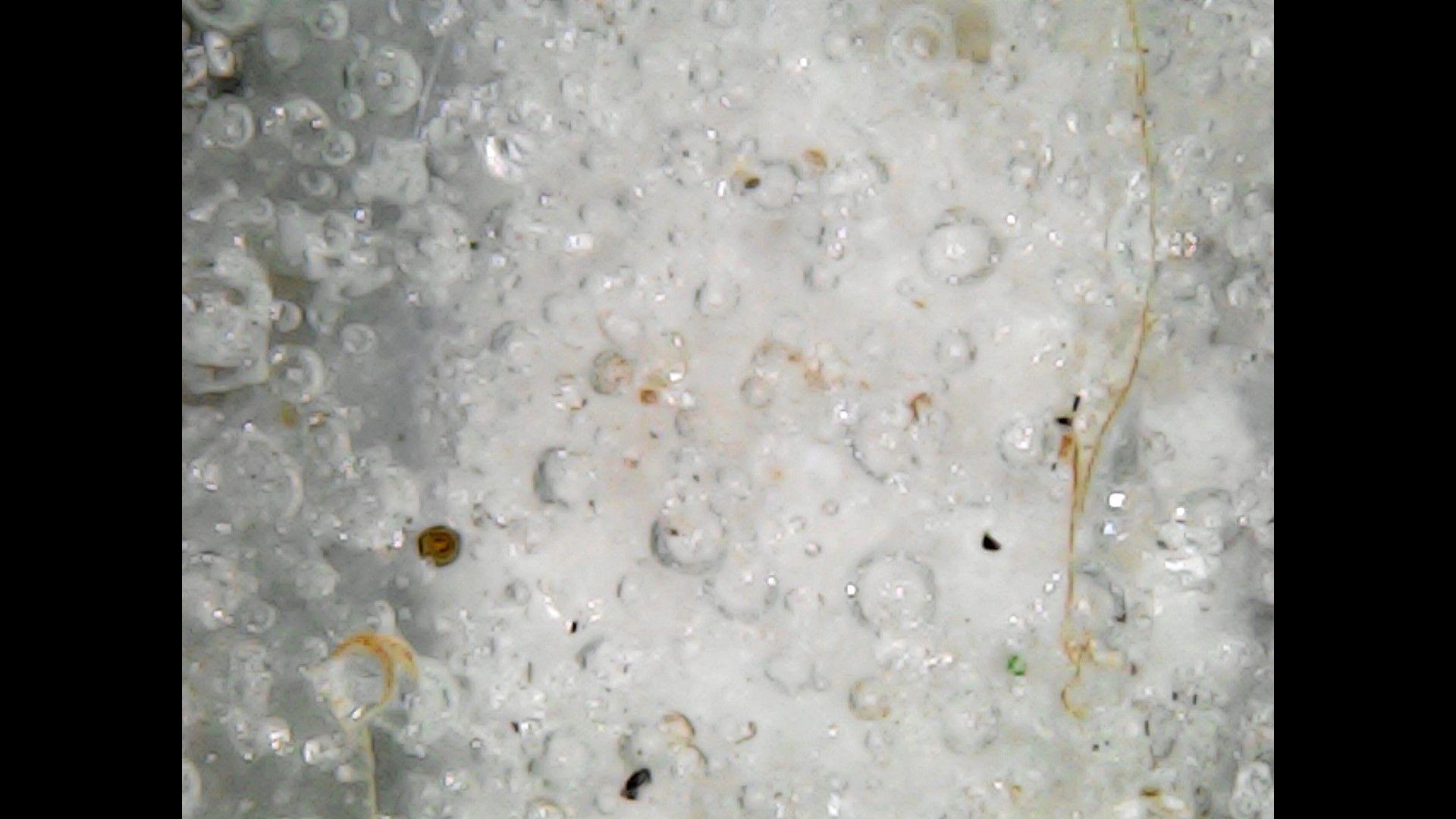Advanced Age Signs
'Dead Glaze Bubbles' as an Advanced Age Sign
"Dead bubbles" can be used for verifying the age of antique Chinese ceramics. It concerns two different types or eras, general glazes(Ming dynasty and later) and the more ancient glazes, as explained for Jun glazes.
First we need to be aware that basically all glazes of Chinese ceramics contain bubbles. This can sometimes be used for age verification. Here we mention "dead" bubbles. To view these the glaze should be subjected to magnification of some 200x to 500x is suggested.
(Electronic magnifiers attached as a peripheral to a computer, tablet or cellphone may do.)
What are glaze bubbles?
These develop during the firing process in the kiln. Water contained in the glaze can form bubbles (steam) from which the water cannot escape. After cooling these remain trapped in the glaze. The size, distribution and configuration in which they appear in the glaze differs.
Dead bubbles
After a very long time (usually hundreds of years) some bubbles close to the glaze surface may develop a tiny hole (not visible to the bare eye). Bubbles in contact with crackles inside the glaze can also develop these.
After more time some of these tiny holes change into straight tiny cracks (invisible without strong magnification). Still later these straight crack become cross-shaped ( a vertical and a horizontal crack). These minute openings can get infiltrated by dirt from the environment over time (not all do). This results in the bubble interior turning to a dark brown or black colour. They are then called "dead bubbles" presumably because they are bubbles no more.
As it takes a very long time for bubbles to reach this stage, this can be a sign that the glaze is really old, usually several hundred years.
Please note however, that at present it is not quite possible yet to tell for sure from what era or period a glaze with dead bubbles is; it is only an indication that the item IS old or antique. There is also a difference in colour. Some are light brown, dark brown or appear completely black. It is assumed that these are different age stages. However, there is still further research needed. Each glaze type is different.

The above enlargement of a glaze shows that glazes are not simple structures. This item is hundreds of years old and shows not only bubbles, but also other age signs.
The dark round dot at the lower left is a dead bubble. The bubble turned dark brown from dirt entering it after a long time. That happens when a bubble is in contact with the glaze surface or a crack in the glaze. Again, this usually takes hundreds of years.
updated: Aug. 27th 2024
